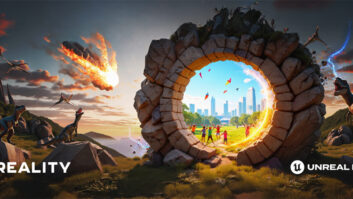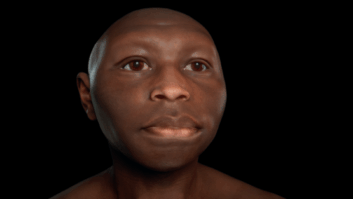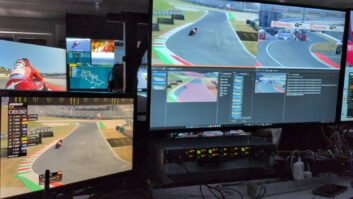As part of this year’s BFI London Film Festival, director Amy Rose created an augmented reality tour of central London that examines the nature of disobedience by fusing historical voices with contemporary realities.
Ghosts of Solid Air is a free, 60-minute experience interactive walk which the viewer experiences via their Android smartphone. The experience remains available until 22nd October.
TVBEurope caught up with the production team to find out more about the project.
Where did the idea for Ghosts of Solid Air come from?
Ghosts of Solid Air was born in the summer of 2020, soon after Edward Colston had been torn from his plinth and thrown in Bristol harbour. Statues were suddenly front page news – with debate raging over who is celebrated and protected by the British government. But as the project developed, the political context of walking the streets of London shifted towards threats to the right to protest and the role of the police.
The Police, Crime and Sentencing Bill, the Kill the Bill protests that followed and the revelations about multiple sexual assaults committed by members of the Metropolitan Police changed the conversation to the nature of democracy and safety on the streets of Britain. The gaze of the project shifted to the humans in the space – the soldiers and police, omnipresent in central London in the streets around Downing Street and the Houses of Parliament.
We wanted to explore what is in a space beyond the immediately visible. Trafalgar Square tells a story with buildings and statues – so what is, and what isn’t, represented? What does it feel like to stand near the fountains and surrounded by all these statues – who has been here before and what memories hang in the air?
We took these questions and turned them into a story about a ghost world. The journey is a subversive trip through time – each character exploring a different aspect of Britain’s shadowy past and how it links to now. We are still living with the long tail of political decisions taken centuries ago, and finding a way to connect across time starts with the sensations of being here, now.
As with all Anagram projects, the experience and story is ultimately designed to hone in on you – asking you to explore your own capacity to speak up and voice dissent. What might get in the way – and what would be your own personal tipping point into disobedience?
Why did you choose to use augmented reality for the experience?
Augmented reality felt like the absolutely natural choice to create an experience that was about “the invisible” in public space.
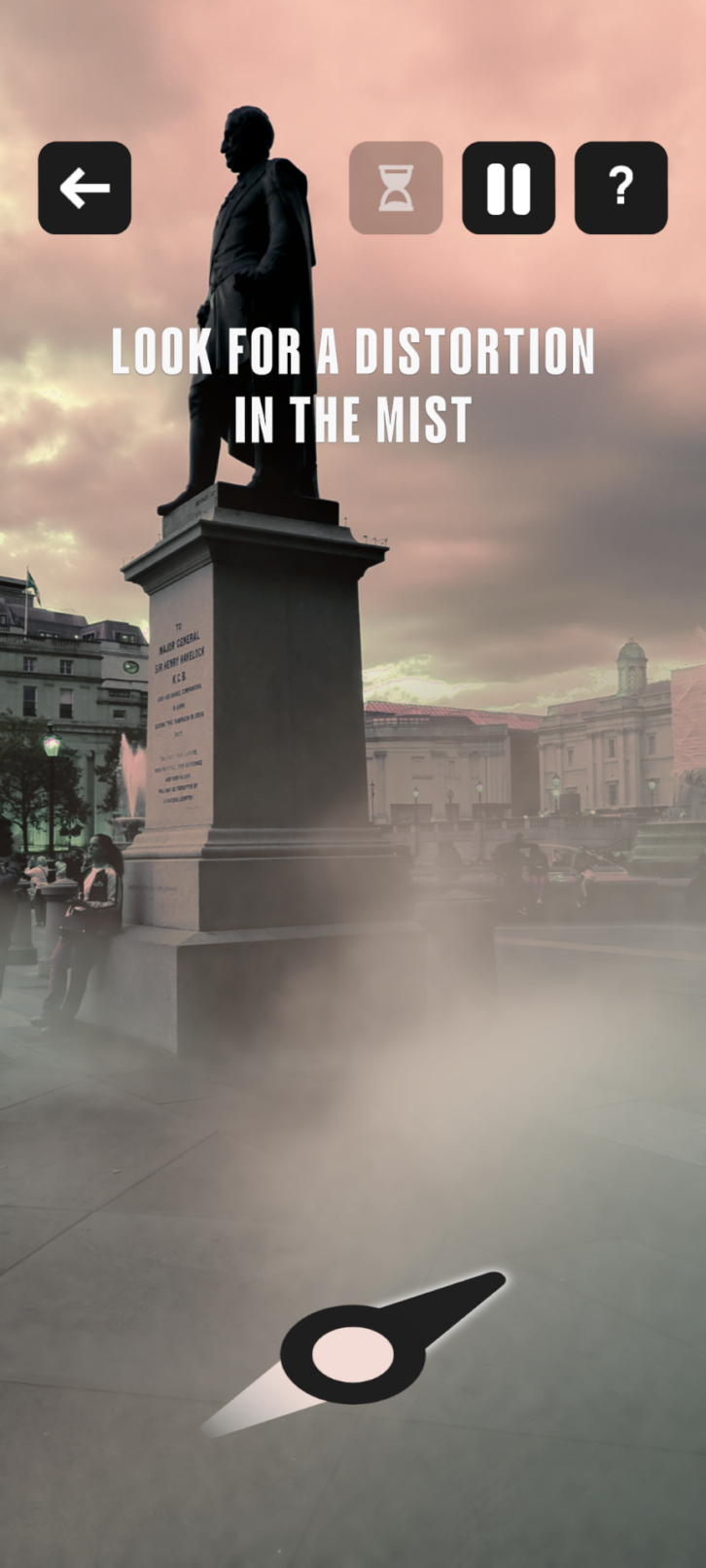
Have you created AR experiences before?
We have made audio walks before and shows that are very audio-led – and we have made VR – including the multi-award-winning Goliath. We haven’t made an AR piece for public space before, where the audio-visual content is rooted in a geographical space – so this was a new experience.
How did you choose which audio clips to use, and how did you edit them together for the experience?
Ghosts of Solid Air is, first and foremost, a story – and it was written by director Amy Rose and co-writer Sonali Bhattacharyya. The writing process was rooted in deep historical and political research, and then went through many drafts to get the right combination of interesting narrative with instructions that would help the audience move through space and look at interesting details of the area. We also used a lot of different archive sound – gathered by Amy Rose and by sound designer Axel Kacoutie.
How did you create the augmented reality graphics?
Working with augmented reality on the limited small screen of a mobile phone is a challenge, both technically and artistically – and computer game imagery that bears very little relation to the texture of the real world is ubiquitous (as demonstrated famously by Pokemon Go). We were looking for a way to do something different. To create a ghost world that felt evocative and rich, and rooted in the real world itself rather than parachuted in from a computer programme. So we built a team drawn from across disciplines who could bring something original to the table.
Mireille Fauchon, with her background in illustration and archives, worked closely with Will Young who has worked with interactive media and 3D visuals for over 15 years.
The pair spent time physically working together – experimenting with the possibilities of both sets of tools and approaches to making. This allowed them to understand how to synthesise their methods – to capture the feelings, textures and tangibility desired and translate them into augmented reality.
Mireille approached the project from a very analogue position. Beginning with building collages using archival imagery, visiting the site, recording the location through taking rubbings of the various textures, architectural elements, street furniture, pavements, manhole covers etc. Will then worked with Mireille to translate some of this into an appropriate form for Unity – the 3D games engine that you build AR projects in. The intention was to create a sense of bodies and forms pressing through an invisible membrane – appearing out of the mist and displacing the air in which you stand, and then melting away again.
These forms could be made in complex contemporary software – but the resulting imagery is perfect, with smooth bodies that feel distant from something with the rough rub of the human. So, instead, Mireille made small models of human figures by hand. This form was 3D-scanned, and then rigged with movements captured from a dancer called Tara Silverthorn. We did this motion capture with CAMERA – The Centre for the Analysis of Motion, Entertainment Research and Applications at the University of Bath.
Again – with the movement – there are vast libraries on the internet that have thousands of movements from perfect kung fu kicks to 100s of different walking cycles. We used these movements while developing the ghosts – but as soon as the forms were rigged with movement from a person – with all the hesitation, rapidity and mistakes of real life – the capacity of the ghostly form to communicate emotion transformed.
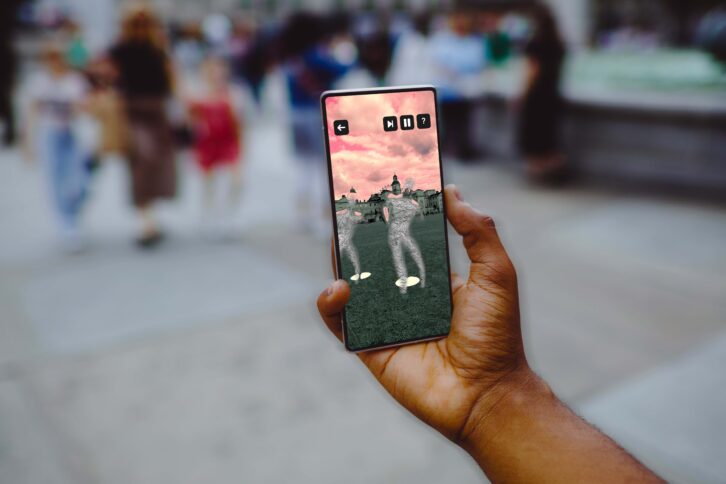
Did you use any special cameras to create the experience?
The ghosts that you find as you move through the story are 3D models that were rigged using movement from a dancer, captured in a motion capture studio. We worked with the team at CAMERA from the University of Bath – who have a brilliant Business Assist Programme that enables studios to experiment with their state-of-the-art equipment. We spent a few days in this motion capture studio, gathering as much movement as possible – these files were then used to rig the 3D models, which means that the ghosts you see moving through space look much more life-like.
What was the biggest challenge of delivering the project?
The biggest challenge for us was the testing pipeline – making a project that works in a specific location means that you can’t test it properly while sitting in a studio. Going outside and walking the route of the piece was incredibly time-consuming, and meant that it was very slow. We remained committed to this because we felt very strongly that the piece needed to feel rooted in place, rather than something that was randomly parachuted onto a real location. When you’re making a story with chapters – you also need things to trigger and work every time without fail. Technology is often not as reliable as you might hope – and we found that certain aspects of what we wanted to do were hard to repeat with absolute accuracy.
Would you use AR again?
The process of making Ghosts of Solid Air has been a huge learning curve for us. Both technologically but also in terms of experience design and marketing. Certain aspects of AR definitely still feel interesting – the sense of finding a story in a real place is exciting, as it feels like a secret hiding in plain sight. You are standing there, on headphones, listening – and nobody around you really knows what you’re doing. That’s exciting, and means that it interfaces with the real world in a way that VR or other sorts of pieces that must exist inside a gallery never will. On the other hand, this makes it harder to produce – as working in public space is full of unexpected challenges. From big events that take over the space where your story is happening to torrential rain to riots… it all happened!
Making a piece that can be accessed on a variety of mobile devices and doesn’t need an exhibition to be available to people is also something we feel is moving in the right direction – as it removes the sense that you have to enter a particular kind of institution to experience the work. For certain communities, this will make the difference between feeling bold enough to do the piece and avoiding it entirely. We are still working on how to share work across diverse audience groups and making a project that can be downloaded and done at any time is a part of that exploration.
What does it mean to you to be included in the BFI London Film Festival?
Being a part of LFF Expanded is so important to us – it’s the perfect place to launch the project and is a brilliant experimental corner of a world-renowned festival. We’re over the moon to be involved.
Ghosts of Solid Air is available for download here.

